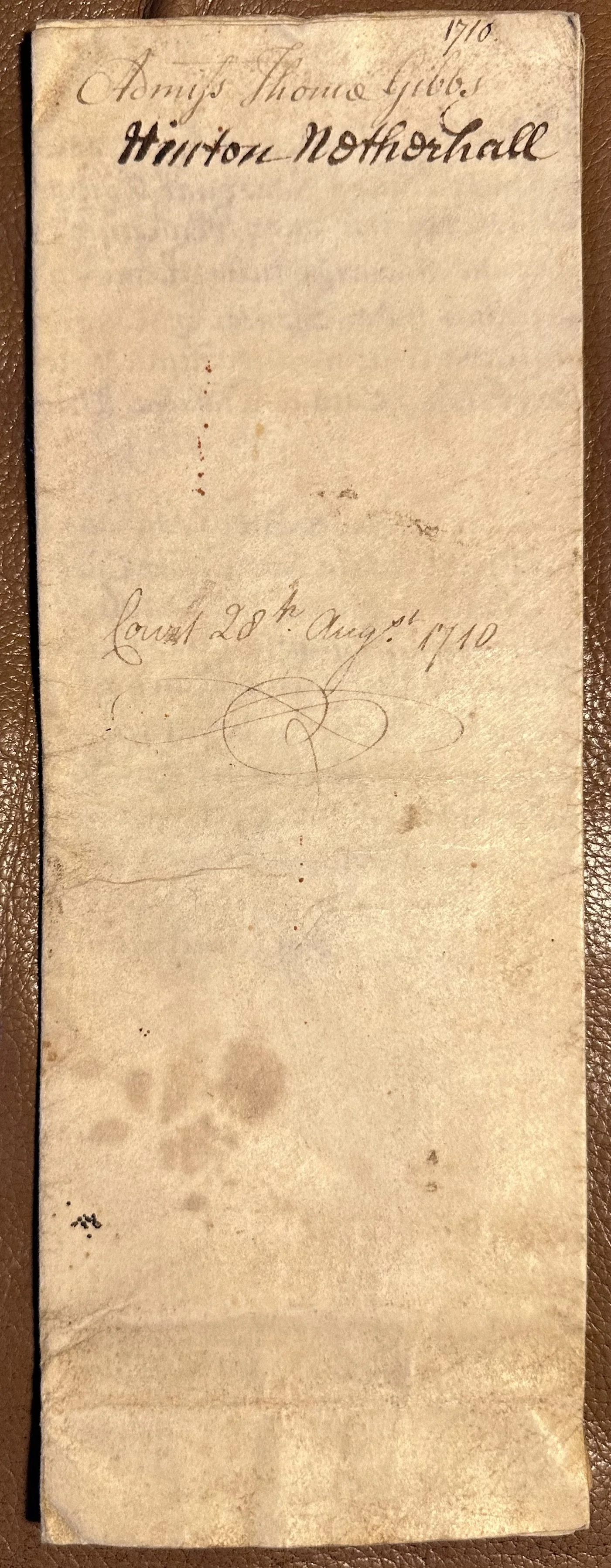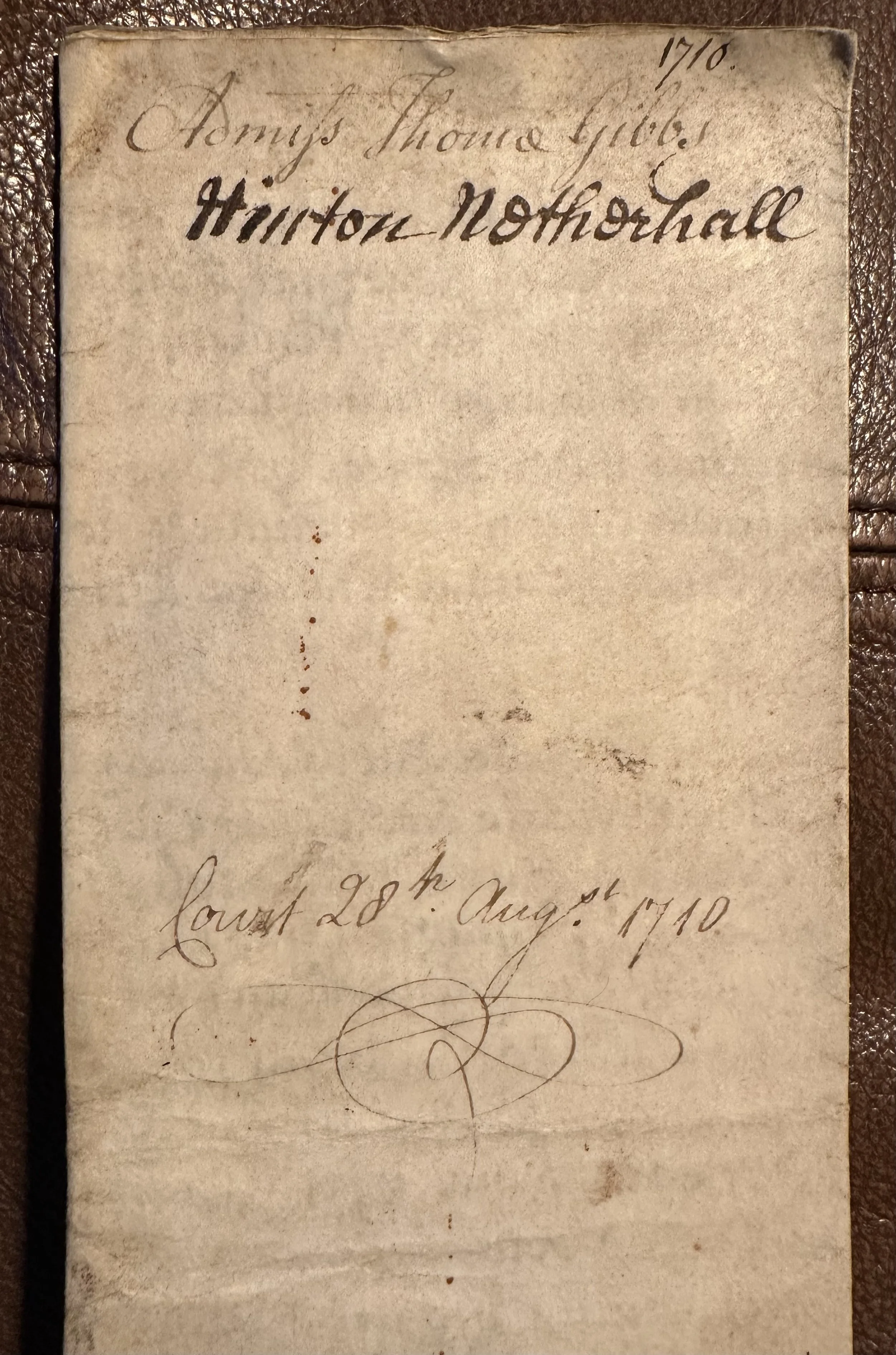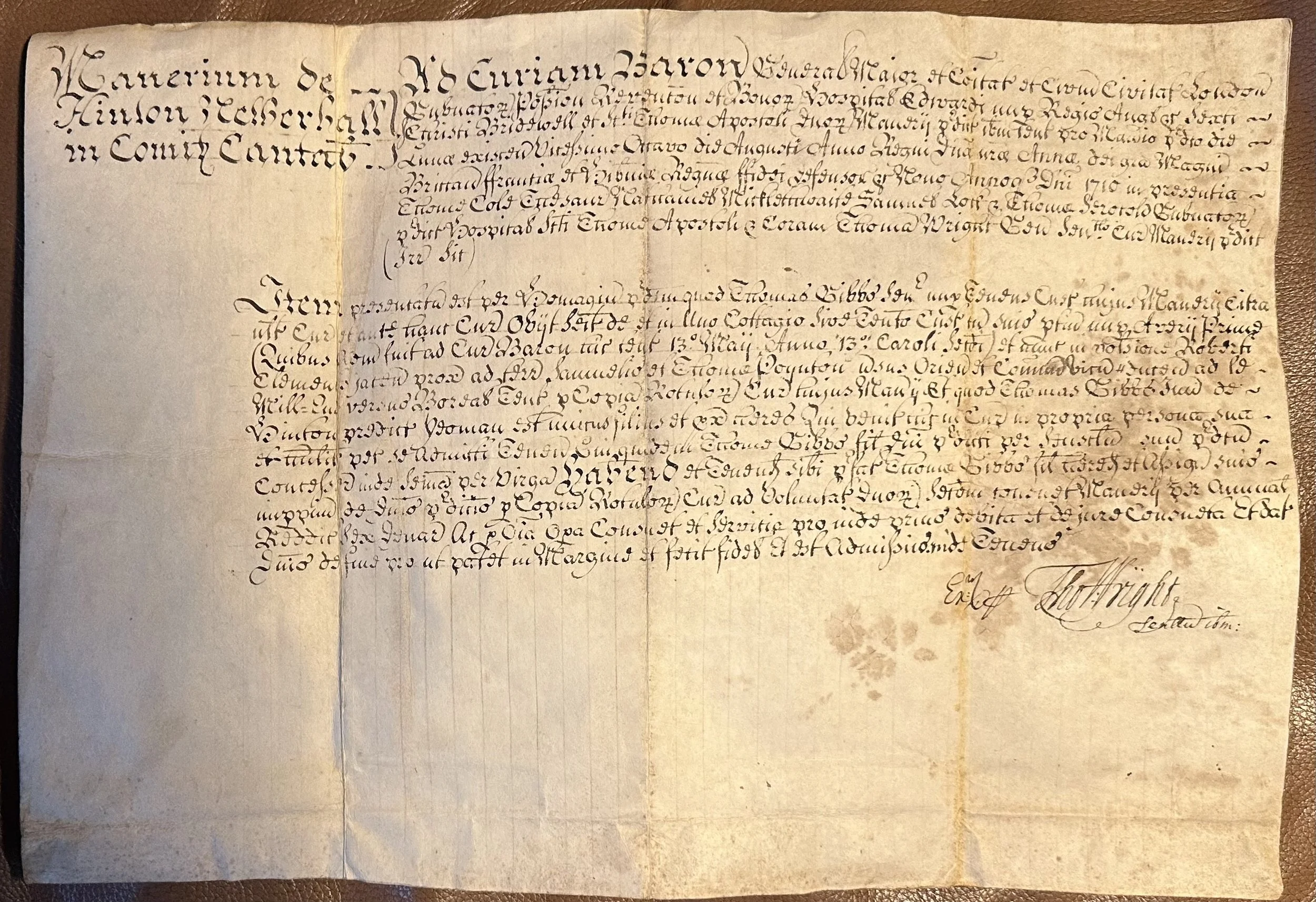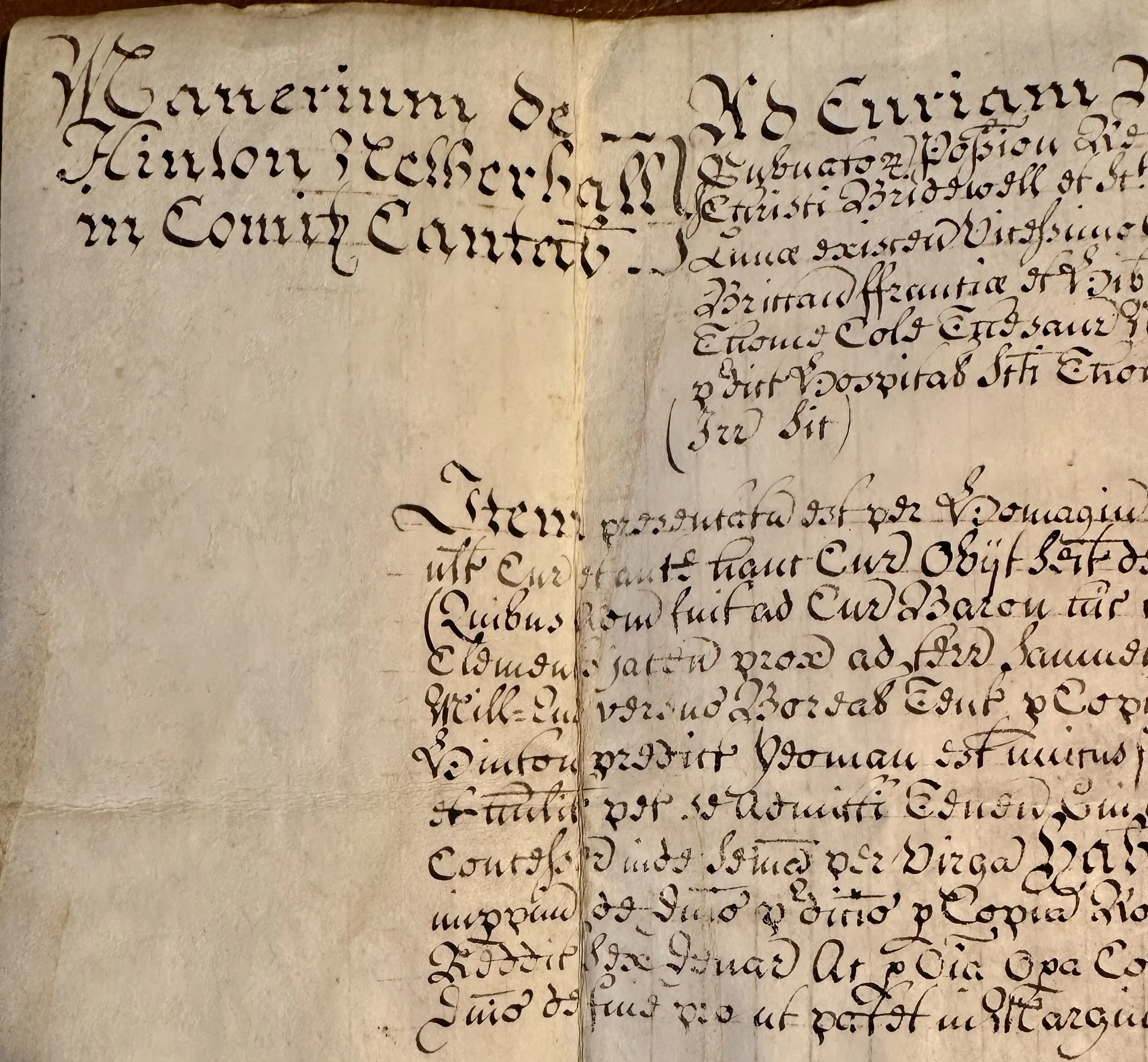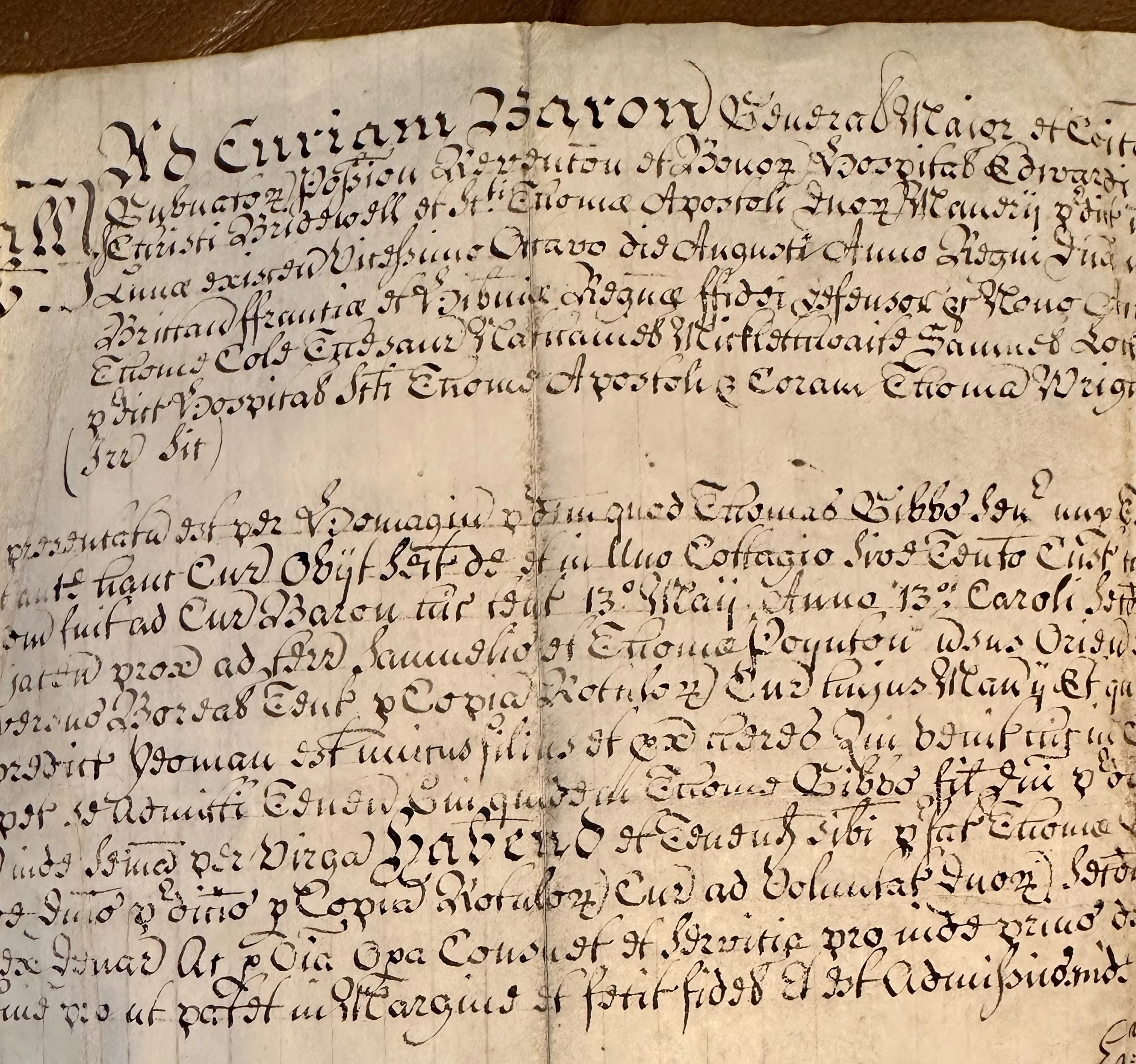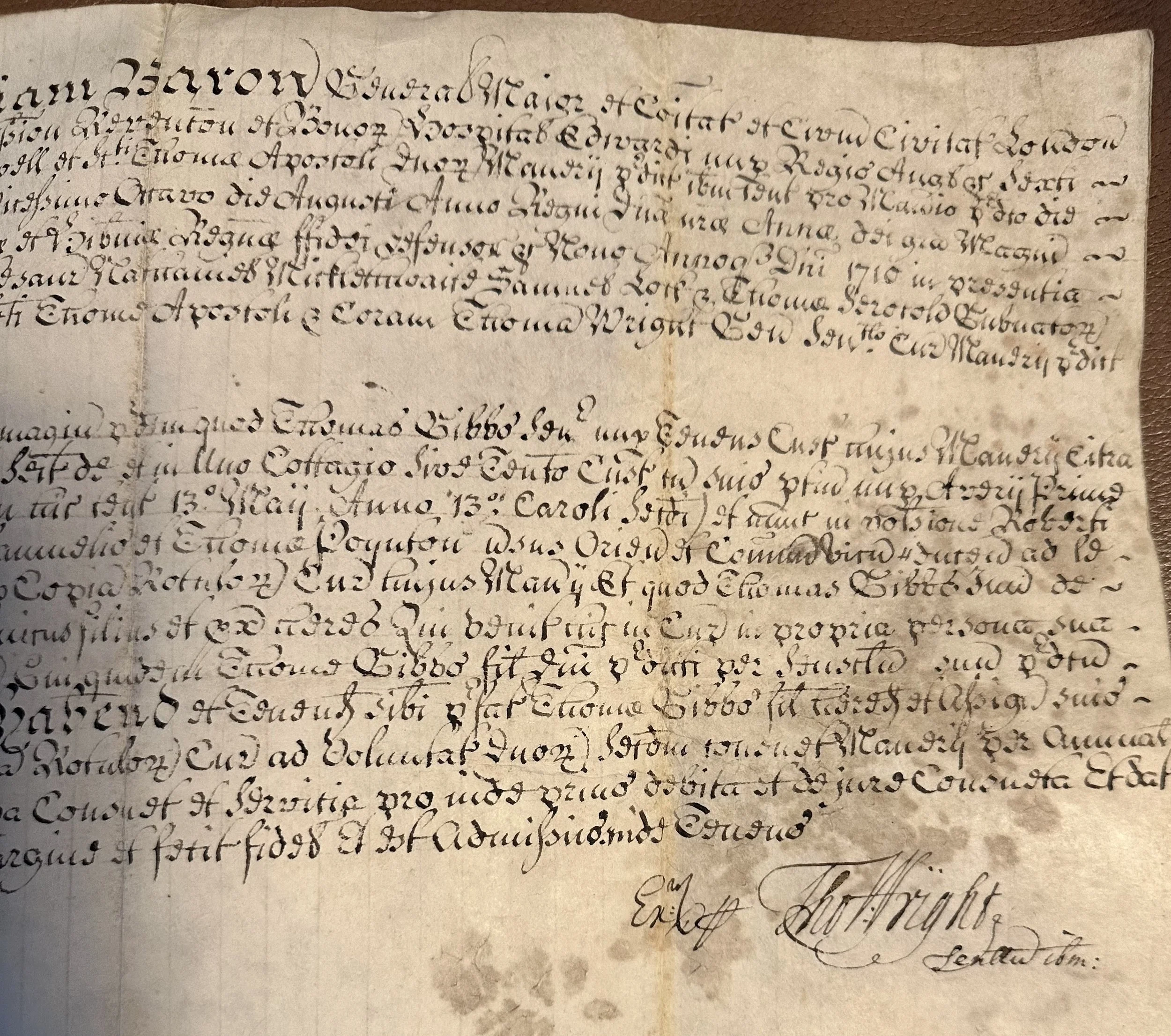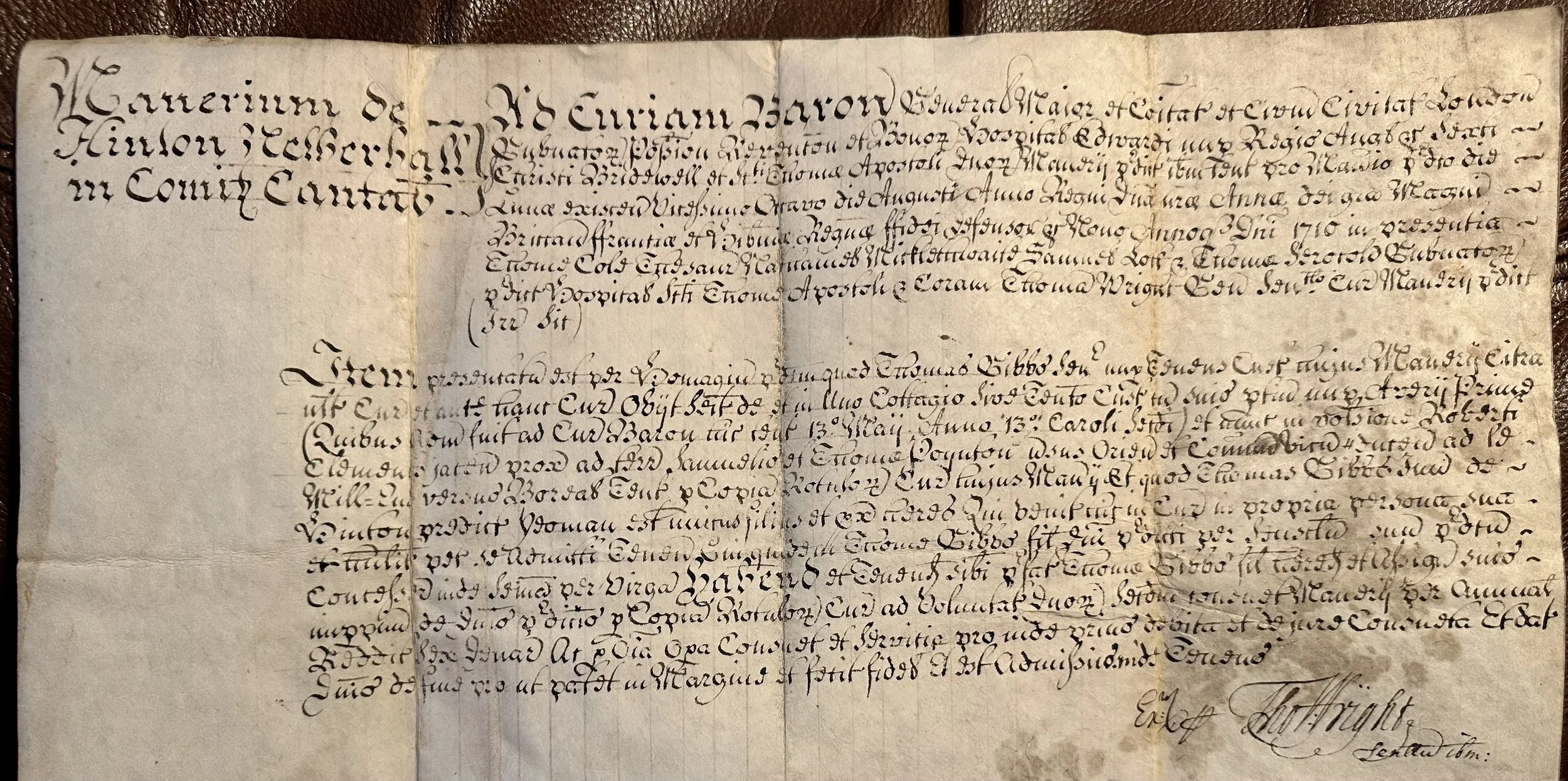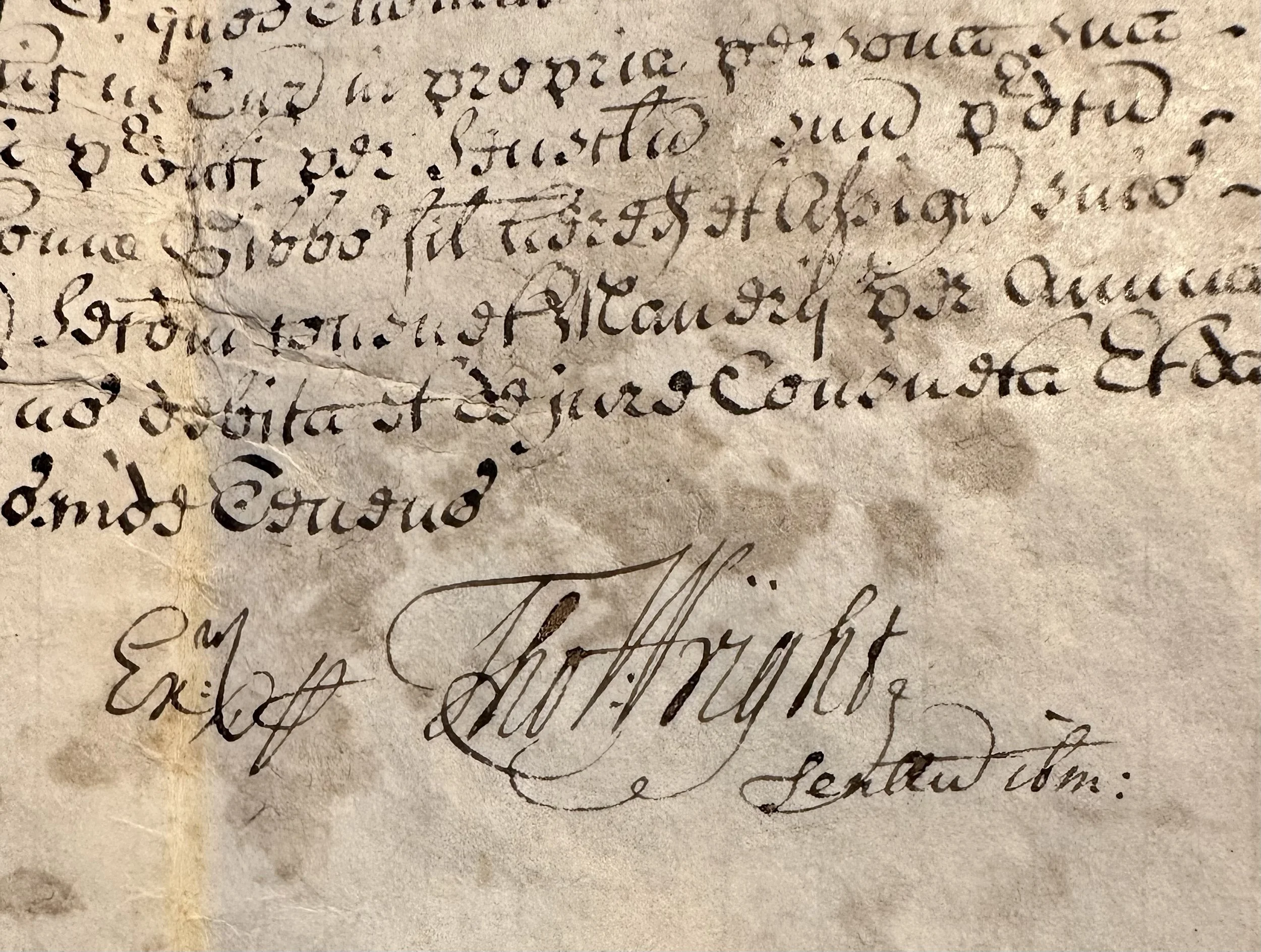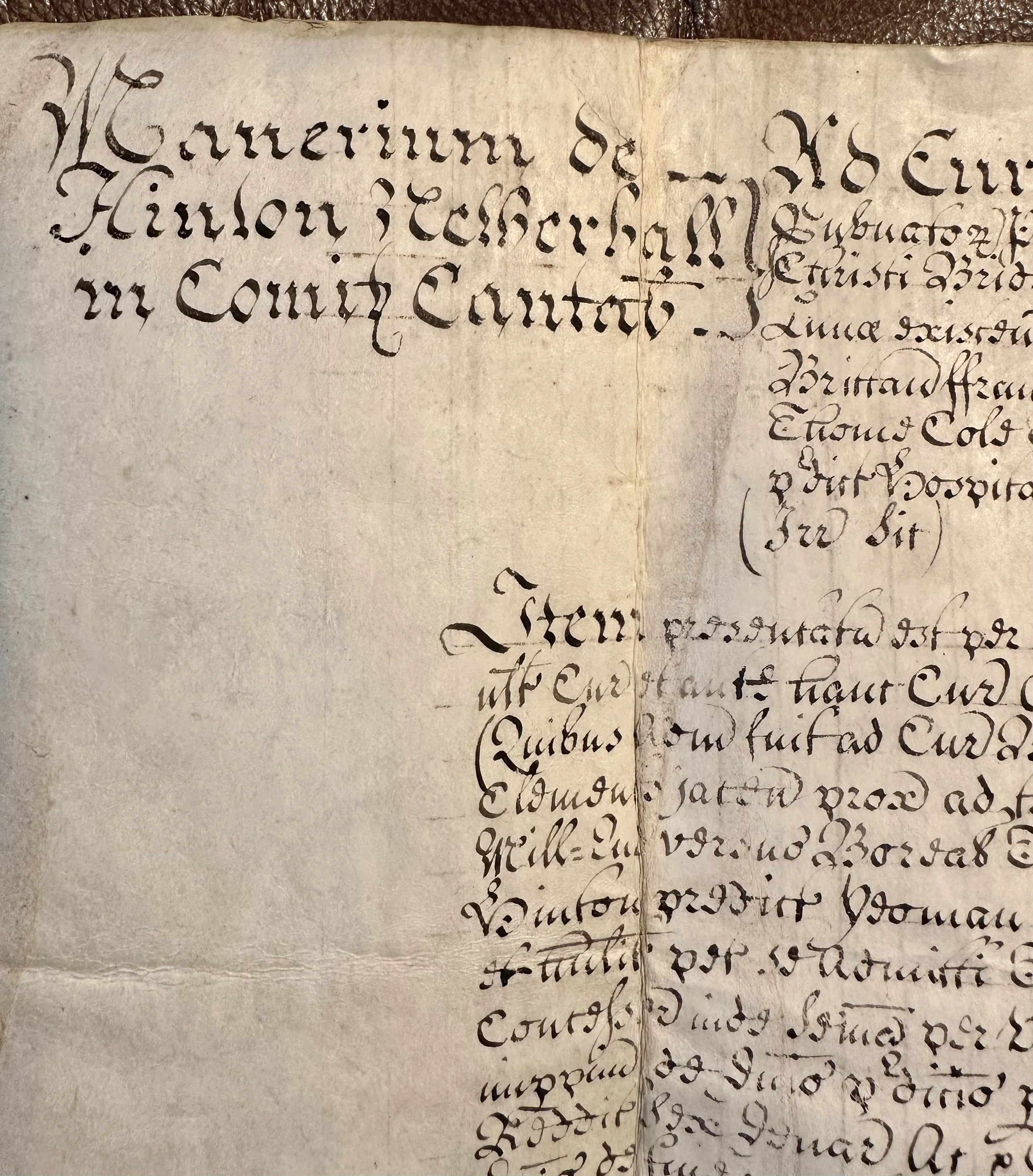1710 Latin manorial court record relating to Hinton Netherhall Manor in Cherry Hinton.
Hinton Netherhall (Netherhall Manor, Cherry Hinton, Cambridge)Court Baron of Edward Mayor, lord of the manor, 1710 signed by Thomas Wright - M Bullivant collection.
This document is regarding Netherhall Manor - Manor of Hinton Netherhall. It mentions belonging to Crown State London under Christ Bridewell of St Thomas the Apostle - this becomes St Thomas’ Hospital and much of the Manor of Hinton was and still is held there - this all links back to when the Bridgetines were in Cherry Hinton (see HERE for more on that) and Cherry Hinton holdings ended up with St Thomas’ Hospital, London.
The document is dated 1710. It mentions Samuel Loft and Thomas Serecold, Thomas Wright, Thomas Gibbs, Thomas Poyuson.
The later Pearce-Serocold family was significant in Cherry Hinton, with members like Reverend Edward Serocold Pearce serving as rector of St Andrew's Church in the early 19th century. Edward's son, Captain Walter Pearce-Serocold, was the last of the family to own the manor before selling it in 1864 to the Ward family. Their estate, often referred to as the Manor House, was a central part of the community. You can see a picture of what is thought to have been Uphall Manor, (another manor lived in by the family) in Cherry Hinton HERE.
My latin is not that good so if anyone would like to have a good at fully translating and transcribing this document please do have a good and comment in the form below :)
A Widow’s Admission: The Bibbs of Hinton Netherhall, 1661
In May 1661, just a year after the Restoration of King Charles II, the small Cambridgeshire village of Hinton Netherhall held its manorial court. These courts, known as Courts Baron, dealt with the transfer of land, the duties of tenants, and the customs that bound a community together.
At this sitting, the jurors reported the death of Thomas Bibb, one of the manor’s copyhold tenants. Copyhold land was held “at the will of the lord” but governed by the strict customs of the manor. A tenant could not freely sell or bequeath his holding: he had to formally “surrender” it into the hands of the lord so that it might be passed on to his chosen heir, whether in lifetime or by will.
Before his death, Thomas had done just that. Through the hands of another tenant, he surrendered his customary land so it could follow the terms of his will. That will named his wife, Elizabeth Bibb, as sole executrix and heir to his property.
And so, on 27 May 1661, Elizabeth appeared in court. She came forward in person, requested admission, and was formally granted possession of her late husband’s lands. By the steward’s rod she took seisin, swore fealty to the lord of the manor Edward Mayor, Esquire and became tenant in her own right.
From this brief Latin entry in the court roll, a family story emerges. We see a widow stepping into her husband’s place, maintaining the household’s standing within the village. We glimpse the careful legal ritual that tied landholding, loyalty, and community together. And we see how, for one woman in Hinton Netherhall, a moment of loss was also a moment of continuity.


